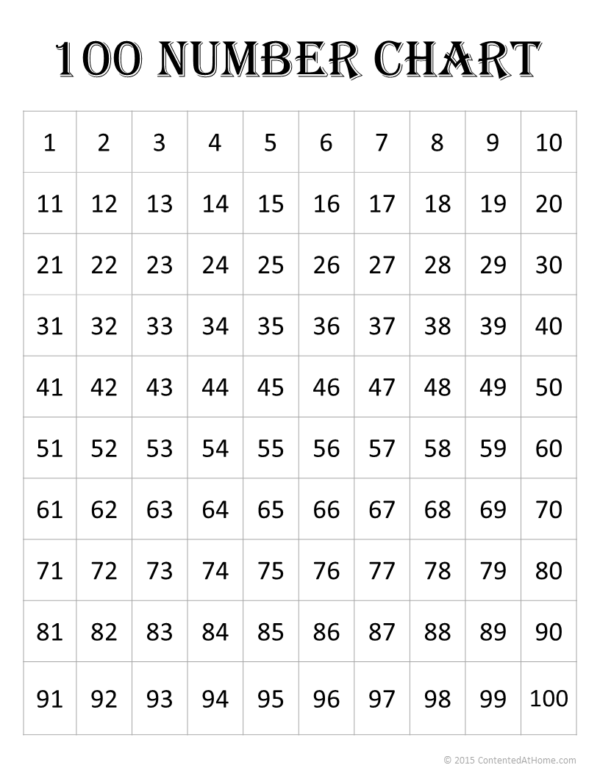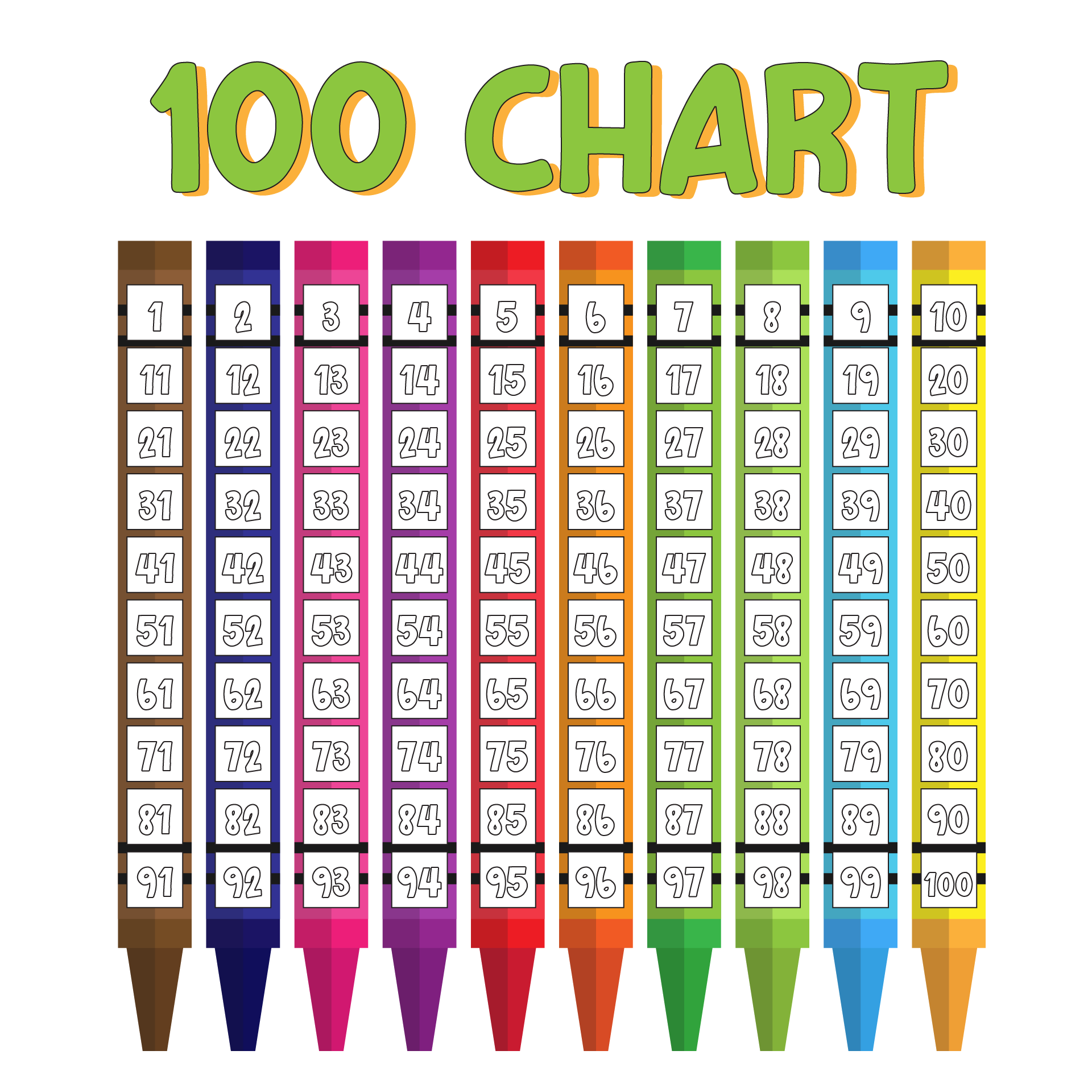Mathematics is a fascinating subject that encompasses a wide array of concepts and skills. One of the fundamental principles of mathematics is understanding numbers and their patterns. To facilitate this learning process, educators often use tools such as the 100 Number Chart. These charts offer a visual representation of numbers from 1 to 100, helping students grasp numerical patterns, counting sequences, and even basic operations.
Exploring the 100 Number Chart
 The 100 Number Chart is a valuable resource that can be utilized in various educational settings. Its simplicity and visual appeal make it an ideal tool for teaching and reinforcing mathematical concepts. This chart typically consists of a grid with rows and columns, displaying the numbers from 1 to 100 in an organized manner.
The 100 Number Chart is a valuable resource that can be utilized in various educational settings. Its simplicity and visual appeal make it an ideal tool for teaching and reinforcing mathematical concepts. This chart typically consists of a grid with rows and columns, displaying the numbers from 1 to 100 in an organized manner.
By examining the chart, students can identify patterns, relationships, and even practice skip counting. For instance, they may notice that all the even numbers form vertical lines, while the odd numbers form horizontal lines. Moreover, the chart allows students to discover that multiples of ten are aligned in columns, making it easier to identify and understand place value.
Utilizing Printable 100 Number Charts
 Printable 100 Number Charts are readily accessible tools that educators and parents can use to enhance their child’s mathematical journey. These charts are available in various designs, formats, and styles, making them suitable for different learning needs and preferences.
Printable 100 Number Charts are readily accessible tools that educators and parents can use to enhance their child’s mathematical journey. These charts are available in various designs, formats, and styles, making them suitable for different learning needs and preferences.
One of the top options for printable 100 Number Charts is available for free at Printablee.com. The collection offers a range of charts that can be printed and used immediately. Whether you prefer a colorful chart or a simpler black and white version, Printablee.com has you covered.
Another popular resource for printable 100 Number Charts is Printablee.com, which offers a diverse selection of charts in PDF format. These charts can be easily downloaded and printed in high resolution, ensuring clarity and ease of use. Additionally, Printablee.com provides a variety of options, including charts with missing numbers, blank charts, and charts with different themes to make learning more engaging.
Benefits of the 100 Number Chart
 The 100 Number Chart is an invaluable tool that offers numerous benefits to young learners. Some of these benefits include:
The 100 Number Chart is an invaluable tool that offers numerous benefits to young learners. Some of these benefits include:
1. Number Recognition: The chart enhances a child’s ability to recognize and recall numbers, which builds a strong foundation for further mathematical concepts.
2. Numerical Patterns: By observing the chart, students can identify patterns such as the increasing sequence of numbers, vertical and horizontal lines formed by even and odd numbers, and regularity in the placement of multiples of ten.
3. Counting Skills: The chart helps students develop and solidify their counting skills, both forward and backward.
4. Place Value Understanding: As students explore the chart, they gain a better understanding of place value and the organization of numbers.
5. Operations Practice: The chart can also be utilized to introduce basic mathematical operations such as addition and subtraction. Students can identify number patterns to facilitate mental arithmetic.
Overall, the 100 Number Chart is a versatile and indispensable resource that aids in the development of crucial mathematical skills. Whether used in classrooms or at home, these charts simplify the learning process and foster a deeper understanding of numbers and their intricacies.
Conclusion
Mathematics is an essential subject that provides students with problem-solving skills and logical reasoning abilities. The 100 Number Chart serves as a stepping stone in mathematical education by instilling number recognition, counting skills, and an understanding of numerical patterns. With easily accessible printable versions available, the chart becomes a valuable tool for educators and parents alike.
By incorporating the 100 Number Chart into lessons and activities, students can enhance their mathematical abilities and develop a solid foundation for future mathematical endeavors. Whether using the chart for counting exercises or exploring more complex patterns, this resource proves to be a stimulating and educational aid.